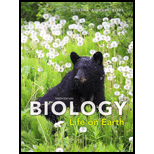
Concept explainers
In chordates, the nerve cord is ________ and runs along the ________ ______ side of the body. During at least one stage of a chordate's life, it has a tail that extends past its _________ and its body is stiffened by a(n) ____________ _________that runs along its length.
To review:
The given blank space in the statement, “in chordates, the nerve cord is ________ and runs along the _______ side of the body. During at least one stage of a chordate’s life, it has a tail that extends past its _________ and its body is stiffened by a(n) ________ that runs along its length.”
Introduction:
The phylum Chordata includes three subphyla, which are vertebrata (Craniata), Cephalochordata (lancelets), and Urochordata (tunicate). All the members of the Chordata show the presence of a notochord, pharyngeal slits, tail, an endostyle, and dorsal-hollow nerve cord at some point of their developmental stage.
Explanation of Solution
A dorsal hollow nerve cord is found in all the chordates, especially in the vertebrates, which is retained throughout their lifetime. It is derived from the ectodermal cells of embryo. All the chordates possess tail beyond their anal region during the embryonic stage of development.
The tail is lost in the humans, which is marked by the coccyx region (tail-bone) of the vertebral column. Like the other members of the chordates, the human embryo contains a tail, which gets absorbed as the development proceeds to the fetal stage.
The notochord is the most district feature of chordates. It is rigid but flexible rod-like structure, which contains large-sized cells whose vacuoles are filled with fluid. A vertebral column replaces the notochord during the later developmental stage in the vertebrates. It gets dissolved during metamorphosis from the larval to the adult stage in the urochordates. The notochord is retailed throughout the lifetime of the cephalochordates.
In chordates, the nerve cord is hollow and runs along the dorsal side of the body. During at least one stage of a chordate’s life, it has a tail that extends past its anus and its body is stiffened by a notochord that runs along its length.
Want to see more full solutions like this?
Chapter 24 Solutions
Biology: Life on Earth
- All chordates have a _______ as embryos. a. backbone b. jaws c. notochord d. kidneysarrow_forwardWhich of the following is not a characteristic of the phylum Chordata Group of answer choices skull dorsal nerve cord notochord pharyngeal gill slitsarrow_forwardAccording to a cladistically-based classification system, tarsiers are: A. Prosimians, partly because of their nocturnal habits and small body size B. Prosimians, partly because of the presence of a tapetum lucidum and a rhinarium C. Strepsirrhines, partly because of the presence of rhinarium and vomeronasal organ D. Haplorhines, partly because of their partial post-orbital closure and fused frontal bonesarrow_forward
- Which of the following animals show the characteristics required to be a chordate? A. Tunicates such as Mogula sp. B. Lancelets such as Branchiostoma sp. C. Vertebrates such as lithobates/Rana sp. D. A and B only E. A,B, and C onlyarrow_forward"Synapomorphies that unite anurans, caecilians, and salamandars and distinguish them from other organisms include _____." moist skin with mucous glands 1 hole (fenestra) in the temporal region of the skull intercostal muscles and diaphragm used for ventilation secondary loss of appendages in adults all of these are synapomorphies of lissamphibiansarrow_forwardWhich of the 4 characteristics of Phylum Chordata is visible on this organism? Pharyngeal slits Dorsal hollow nerve cord Notochord Post-anal tailarrow_forward
- Describe ways in which amniotes are more functionally or structur-ally suited for terrestriality than are anamniotes.arrow_forwardWhich of the following is NOT a characteristic of all reptiles? A Use lungs and skin for respiration B Lay eggs on land C Their body is covered with scales made of keratin D Their skin secretes a mucous to keep it moistarrow_forwardYou are a chordate, yet you lack most of the mainderived characters of chordates. Explain.arrow_forward
- Which of the following structures is not a component of the watervascular system of an echinoderm? a. Ossicles b. Ampullae c. Radial canals d. Madreporitesarrow_forwardFeeding and gas exchange in chordates is via pharyngeal gill slits. True False In tunicate larvae, the notochord is used to anchor the animal to the substrate. True False The madreporite located on the oral surface is to take water into the water vascular system. True Falsearrow_forwardWhich of the following statements is correct for all amniotes? A. They have internal fertilization, three embryonic membraes, are independent of water for reprodction B. They have external fertilization if they live in water, have alantoic membranes to carry oxygenated blood to the embryo, and lack a shell on their eggs. C. They lay eggs covered with a shell, are viviporous and have a marsupium D. They have an embryonic chorionic membrane that becomes part of the placenta, has cells with Golgi bodies,and a yolk sac E. They have three embryonic membranes, have notochords, and are ovoviviparous.arrow_forward

 Biology Today and Tomorrow without Physiology (Mi...BiologyISBN:9781305117396Author:Cecie Starr, Christine Evers, Lisa StarrPublisher:Cengage Learning
Biology Today and Tomorrow without Physiology (Mi...BiologyISBN:9781305117396Author:Cecie Starr, Christine Evers, Lisa StarrPublisher:Cengage Learning

